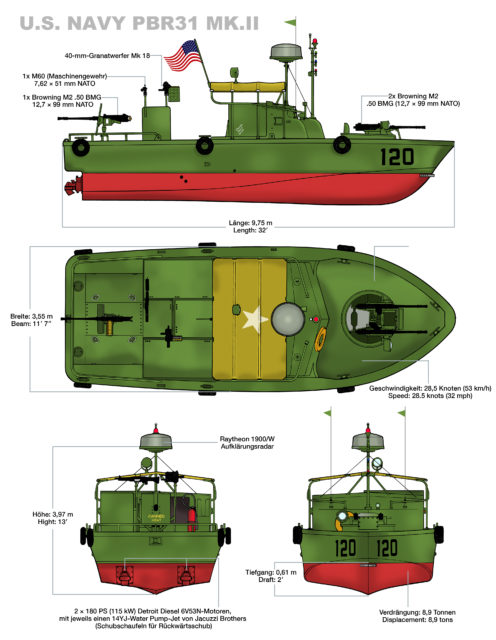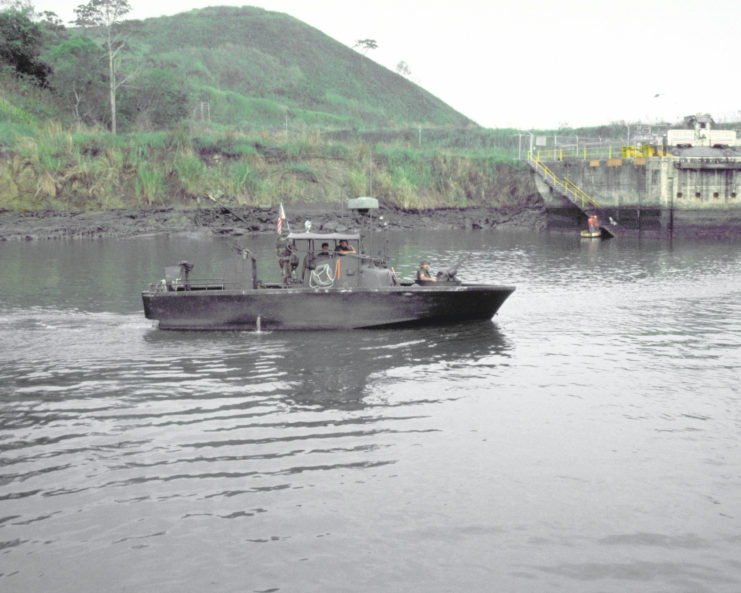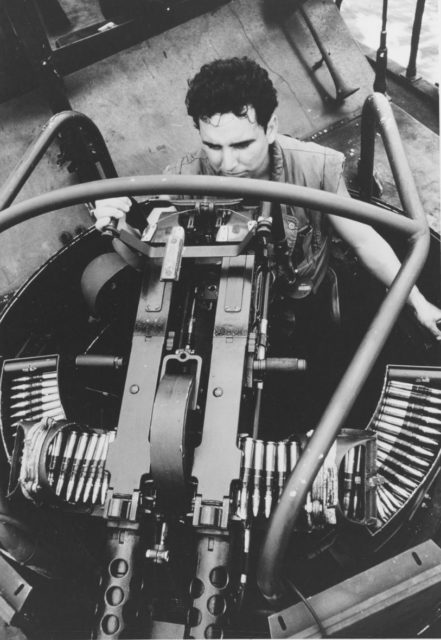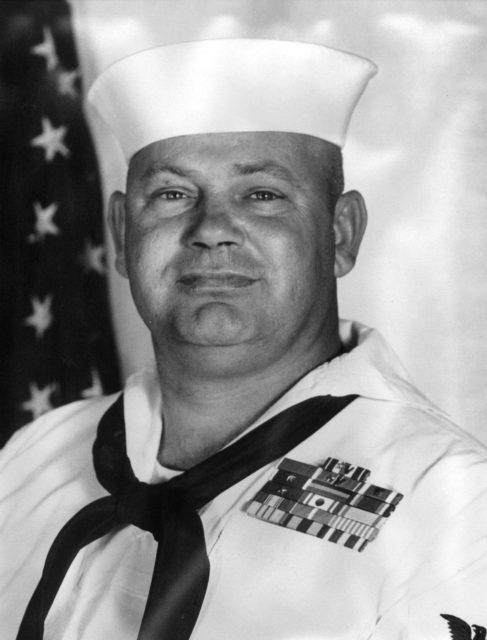The Patrol Boat, River, or PBR, was a small but highly agile vessel used extensively by the U.S. Navy in Vietnam. Designed specifically for the country’s dense and constricted rivers, it was equipped with multiple armaments that made it a formidable opponent against enemy craft.
PBRs were developed from pleasure boats

The Patrol Boat, River was conceived by Willis Slane and Kack Hargrave of Hatteras Yachts. Just seven days after meeting with US Navy officials, the designers created a prototype, incorporating a hull based on an existing Hatteras Yachts model. The final design of the PBR was influenced by a pleasure boat from Uniflite and other sources.
In October 1965, after evaluating the prototype, the Navy awarded a contract for 140 boats, with 11 delivered by March 1966 to aid Operation Game Warden, the US mission aimed at cutting off the Viet Cong’s access to resources in the Mekong Delta.
In the years that followed, around 300 PBRs were supplied to US and South Vietnamese forces, playing an essential role in the Vietnam War from 1966 to 1975.
Built for Vietnam’s shallow, weed-filled rivers

The Patrol Boat, River—most often referred to as the PBR—was a lightweight patrol craft built with a fiberglass hull and optimized for speed and maneuverability in Vietnam’s inland waters. Two main models entered service, the Mark I and the Mark II. While they followed the same general layout, the Mark II was slightly larger, stretching 32 feet in length with a beam of 11 feet, seven inches. The earlier Mark I came in at 31 feet long with a beam of 10 feet, seven inches.
Exceptionally nimble, the PBR could spin in place, make abrupt turns, and halt almost instantly. Even when fully loaded, it required only two feet of draft, allowing it to slip through the shallow, plant-clogged channels of the Mekong Delta. The crew cabin was protected with ceramic armor, and a gun tub positioned at the bow gave the forward gunner a clear field of fire.
This remarkable handling gave the PBR access to river stretches off-limits to larger American ships, making it indispensable to both the Army’s 458th Transportation Company (LARC) and, most notably, the Navy’s River Patrol Force, Task Force 116.
A typical crew consisted of four sailors: a petty officer first class who commanded the boat, along with a gunner’s mate, an engineman, and a seaman. To improve their odds of survival during combat, every sailor was trained to take over one another’s duties. On occasion, an interpreter would also ride along to help guide the crew through the complex waterways of the delta.
PBRs were stacked with weaponry

Each Patrol Boat, River was equipped with a plethora of weapons, meaning it could hold its own in a firefight. The forward bow turret had twin M2HB Browning heavy machine guns, while the rear pintle mounting was equipped with either a single Browning or an M60 light machine gun. The pintle mounting amidship featured either an Mk 19 grenade launcher or a single Browning.
PBRs could also hold 81 mm mortar launchers, Mk 16 Mod 4 Colt 20 mm automatic cannons and flamethrowers, and had a full complement of hand grenades, shotguns, M16 rifles and .45-caliber ACP handguns manned by the crew.
Earning the Medal of Honor aboard a PBR

There are several instances where PBRs and their crews engaged with the enemy. One such instance occurred in October 1966, for which BM1. James E. “Willie” Williams was awarded the Medal of Honor for his bravery.
Williams was the captain of PBR-105 and another patrol boat tasked with searching for Viet Cong guerrillas along a section of the Mekong Delta. While doing so, the group came under heavy fire from two enemy sampans and immediately engaged with those aboard the vessels.
Williams’ men successfully killed the crew of one of the enemy boats and caused the other to seek refuge. While pursuing the sampan, they were met with heavy small-arms and rocket-propelled grenade (RPG) fire from guerrillas hidden behind brush along the riverbank.
To counter, Williams exposed himself to the enemy fire to direct his crew. They were heavily outnumbered, so the captain called for aerial support from American Bell UH-1B Iroquois helicopters. As they maneuvered the river, PBR-105 came upon an even larger concentration of enemy boats and troops. Choosing not to wait for the choppers, Williams, instead, led his men through the intense gunfire.
By this point, it had gotten dark, and Williams ordered that the PBRs’ searchlights be turned on, despite the target that would inevitably be placed on the vessels. They, again, engaged with enemy forces stationed onshore. Through Williams’ direction, his crew wound up destroying over 50 Viet Cong vessels and took out an estimated 1,000 guerrillas.
More from us: HMS Victory: The World’s Oldest Warship Still In Commission
On May 14, 1968, US President Lyndon B. Johnson presented Williams with the Medal of Honor, just one of the numerous decorations he received throughout his career in the US Navy.
